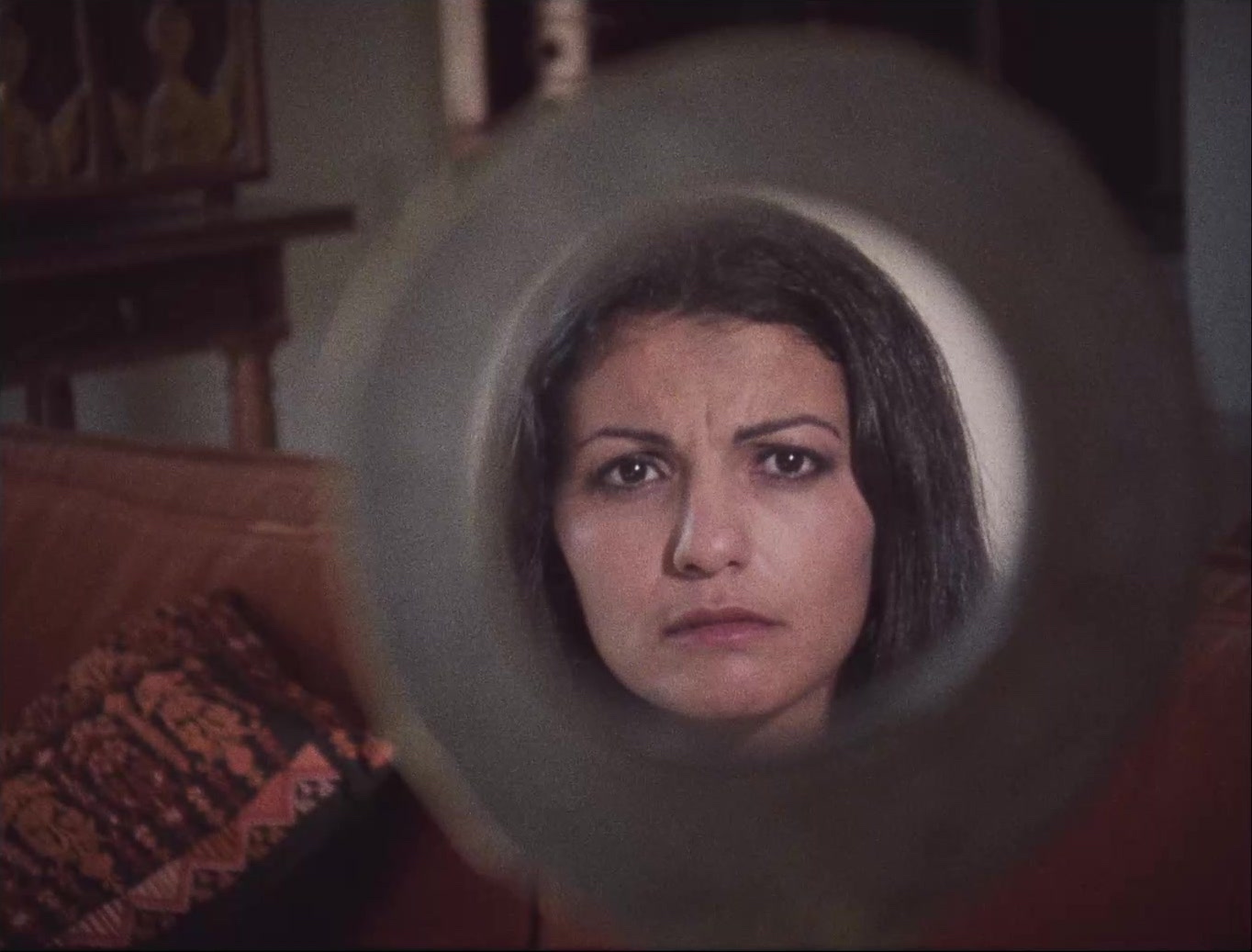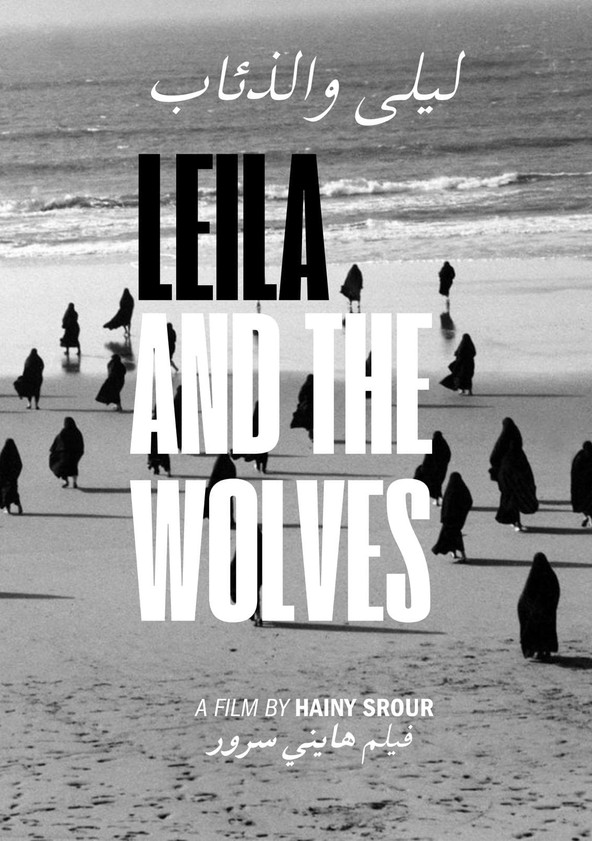
It's true that thanks to different feminist movements, women have gained space in recent decades. It's no longer so rare to see a woman as President of a country, of an organization, or as the director of a film. Unfortunately, despite this, there are still countries in which the position of women is highly invisible and undervalued. The misogynistic and anachronistic theocracies of the Middle East are a good example of this.
Es cierto que gracias a diferentes movimientos feminsitas las mujeres han gando espacios en las últimas décadas. Ya no es tan raro ver a una mujer como Presidente de un país, de una organización, o como directora de una película. Desafortunadamente, a pesar de eso, aún existen países en los que la posición de la mujer está muy invisibilizada e infravalorada. Las misóginas y anacrónicas teocracias de oriente medio son un buen ejemplo de ello.
It's not easy to be a woman and live in an Arab country. In the MUBI description of this film it's stated that when this story appeared "to be Arab and a woman was to be invisible twice". And from that invisibility rose the voice of Heiny Srour, a Lebanese woman who wrote, directed and produced Leila and the Wolves exactly forty years ago. The film has a hybrid tone in what we could call a documentary fiction, because although it uses real video records, it also incorporates some symbolism and adds scenes that seem more imagined, although inspired by real events. Leila is a woman who lives in London and is preparing an exhibition about the situation in Palestine and as she looks through the dozens of photographs exhibited with her project partner, she asks him why no women appear in the photographs? The man responds that there were no women in those scenarios of conflict and armed war. But he is wrong. Women were always present in some way in each of the resistance movements in Lebanon and Palestine, whether against the British, against neighboring peoples or against anyone else who wanted to colonize their territory and, to demonstrate it, Leila will travel to different moments of the 20th century and will show us - us and her companion - how important the intervention of thousands of anonymous women was who always fought in a thousand different ways.
No es fácil ser mujer y vivir en un país árabe. En la descripción de MUBI de esta película se expresa que cuando apareció esta historia "ser árabe y mujer era ser invisible dos veces". Y desde esa invisibilidad se alzó la voz de Heiny Srour, una mujer libanesa que escribió, dirigió y produjo Leila and the Wolves hace exactamente cuarenta años. La película tiene un tono híbrido en lo que podríamos denominar una ficción documental, pues si bien emplea registros de video reales, también incorpora algo de simbolismo y agrega escenas que parecen más bien imaginadas, aunque inspiradas en hechos reales, eso sí. Leila es una mujer que vive en Londres y que prepara una exhibición sobre la situación en Palestina y mientras recorre las decenas de fotografías exhibidas junto a su compañero de proyecto, le pregunta ¿por qué no aparecen mujeres en las fotografías? El hombre le responde que no había mujeres en esos escenarios de conflictos y de guerra armada. Pero se equivoca. Las mujeres siempre estuvieron presentes de alguna manera en cada uno de los movimientos de resistencia en el Líbano y en Palestina, ya fuera contra los británicos, contra los pueblos vecinos o contra cualquier otro que quisiera colonizar su territorio y, para demostrarlo, Leila viajará a diferentes momentos del siglo XX y nos mostrará - a nosotros y a su compañero - lo importante que fue la intervención de miles de mujeres anónimas que lucharon siempre de mil maneras diferentes.

This is how we see scenes in Lebanon, or in Palestine, in the twenties, thirties, sixties, seventies, and through all of them we see Leila walk like a witness of another time with her immaculate white coat and her mission to show us that there was women who collaborated with the rebels hidden in the mountains by passing them weapons or bringing them food, but when they had to take weapons into their own hands they also did so.
Es así como vemos escenas en el Líbano, o en Palestina, en los años veinte, treinta, sesenta, setenta, y por todos ellos vemos a Leila pasear como un testigo de otro tiempo con su impoluta bata blanca y su misión de mostrarnos que hubo mujeres que colaboraron con los rebeldes ocultos en las montañas pasándoles armas o llevándoles comida, pero que cuando tuvieron que tomar las armas con sus propias manos también lo hicieron.
Although the film seeks to vindicate this misunderstood female absence, it also covers other topics such as the eternal conflict between Israel and Palestine and the presence of separatist creeds and religions in an environment in which previously everyone was part of the same people and, therefore, siblings. With a direction of photography that uses long shots and moving sequences a lot, we see Leila travel through the recent decades as if it were a continuous dream, a kind of Dickensian journey in which the director gives voice to mothers, wives, daughters, nieces and women who were there. There are some scenes of great symbolism and a lot of visual impact, such as the classic presentation image of this post where fourteen women dress completely in black in front of a beach where - this would be seen when the camera is turned - dozens of men are bathing in swimsuits; or the scene in which Leila, looking in the mirror, imagines herself as an old woman talking to her daughters and granddaughters and wonders if this will be her future; or also that other scene near the end in which we see different male figures with religious costumes and skull heads dancing a macabre dance to which they then drag Leila, the only female figure in white that spins in the middle of those male shadows: she is the sheep among the wolves.
Si bien la película busca reivindicar esa malentendida ausencia femenina, también abarca otros temas como el eterno conflicto entre Israel y Palestina y la presencia de credos y religiones separatistas en un entorno en el que antes todos eran parte de un mismo pueblo y, por tanto, hermanos. Con una dirección de fotografía que utiliza mucho los planos largos y las secuencias en movimiento, vemos a Leila recorrer las direrentes décadas como si se tratase de un sueño continuo, una especie de viaje dickensiano en el que la directora le da voz a madres, esposas, hijas, sobrinas y mujeres que estuvieron allí. Hay algunas escenas de gran simbolismo y de mucho impacto visual, como la clásica imagen de presentación de este post en donde catorce mujeres visten completamente de negro frente a una playa en la que - esto se vería al girar la cámara - decenas de hombres se bañan en trajes de baño; o la escena en la que Leila, mirándose al espejo, se imagina a sí misma de anciana hablando con sus hijas y sus nietas y se pregunta si ese será su futuro; o también esa otra escena casi al final en la que vemos diferentes figuras masculinas con trajes religiosos y cabezas de calavera bailando una danza macabra a la que luego arrastran a Leila, la única figura femenina y de blanco que da vueltas en medio de esas sombras masculinas: es la oveja en medio de los lobos.

In the face of blindness and silence, director Heiny Srour manages - through Leila - to raise her voice and show the important female presence in the midst of a history that, like so many, sought to erase them from the past. The courage and determinism of this woman - in addition to her talent - who managed to make this film in a country, a time and a moment in which everything was against her is incredible.
Ante la ceguera y el silencio, la directora Heiny Srour logra - a través de Leila - alzar la voz y mostrar la importante presencia femenina en medio de una historia que, como tantas, buscó borrarlas del pasado. Es increíble el valor y el determinismo de esta mujer - además de su talento - que logró realizar esta película en un país, una época y un momento en el que tenía todo en contra.
The situation between Israel, Lebanon, Palestine, and other Arab countries has always been tense, but they are peoples with more things in common than differences, the director herself had a Palestinian grandmother and a Jewish grandfather, and it's a little sad that this crisis between two people is not a chapter of the past but is still valid forty years after Leila and the Wolves appeared, a hidden cinematographic gem that, although it has its share of fantasy, denunciation, politics and reflection, is above all a feminist film, made by a woman to recover a past that history wanted to steal from her and her peers. In addition to the message, the film's cinematography is very well executed and although the film was not filmed with the best equipment and the clarity may not be the best, the conservation and restoration work allows us to enjoy it today in its most faithful version. I managed to see this movie on MUBI where the warning appeared that it would only be available for two more days, so if you want to see it, run to the platform. I also saw that it was available on Amazon Prime Video, but not for all latitudes. I don't remember having seen another film made in Lebanon, but I would like to, can any of you recommend one? have you seen this movie? I read you in the comments.
La situación entre Israel, Líbano, Palestina, y otros países árabes siempre ha sido tensa, pero son pueblos con más cosas en común que diferencias, la propia directora tenía una abuela palestina y un abuelo judío, y es un poco triste que esa crisis entre dos pueblos no sea un capítulo del pasado sino que siga vigente a cuarenta años de haber aparecido Leila and the Wolves, una escondida joya cinematográfica que, aunque tiene su cuota de fantasía, de denuncia, de política y de reflexión, es sobre todo una película feminista, realizada por una mujer para recuperar un pasado que la historia quería robarle a ella y a sus semejantes. Además del mensaje, la fotografía de la película está muy bien ejecutada y aunque la cinta no fue filmada con los mejores equipos y la nitidez quizás no sea la mejor, las labores de conservación y de restauración nos permiten disfrutarla hoy en su versión más fiel a la original. Logré ver esta película en MUBI en donde aparecía la advertencia de que sólo estaría disponible por dos días más, así que si quieren verla vayan corriendo a la plataforma. También vi que estaba disponible en Amazon Prime Video, pero no para todas las latitudes. No recuerdo haber visto otra película realizada en Líbano, pero me gustaría hacerlo, ¿alguno de ustedes me puede recomendar alguna? ¿han visto esta película? Los leo en los comentarios.
Reseñado por @cristiancaicedo
Other posts that may interest you | Otros posts que pueden interesarte:
  |
|---|



